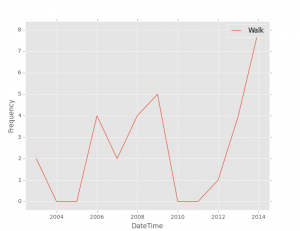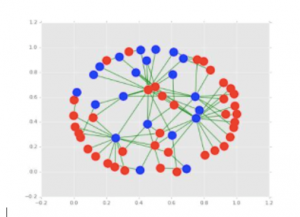Laurence Anthony and Claire Hardaker first introduced FireAnt at the CL2015 conference. In their talk, Claire explained that her work with the Discourse of Online Misogyny (DOOM) project had led her to realise that when working with Twitter data, you fast encounter a large array of problems: how to easily collect data, how to arrange that data in a useful way, and how you then analyse that data effectively. It was these problems that had led to the creation of FireAnt, a freeware social media and data analysis toolkit. Laurence and Claire showed the CL2015 audience a beta version of FireAnt, and it’s safe to say it was very well received… the Q&A at the end of their talk went along the lines of ‘it will be publicly available, right?’, ‘when can I get my hands on it?’, and ‘can I sign up to help you trial the beta version?’.
Well, ladies and gentlemen, the wait is over. On Monday 22nd February, Laurence and Claire officially launched FireAnt; it became available to the public on Laurence Anthony’s website, and they held a launch event at Lancaster University to teach people how to use the tool. Here’s a little about what I learnt at this launch event…
FireAnt is not just for analysing social media data; it’s also for collecting it…
FireAnt makes collecting tweets incredibly easy. All you have to do is enter a search term, specify how long you want FireAnt to collect tweets for (or set a maximum number of tweets you want it to collect), and go away and have a cup of tea. To trial this, I instructed FireAnt to start collecting tweets that contained the hashtag #feminism. While I munched my way through two biscuits and two cups of tea, 675 tweets were posted on Twitter containing the hashtag #feminism; FireAnt collected all of these.
FireAnt helps you extract the data you’re actually interested in…
When you collect social media data, you don’t just collect texts that people have posted online. You also collect lots of information about these texts – for example, the date and time that each text was posted on the internet, the username of the person who posted the content, the location of that user, etc. This means that the file containing all your data is often very large, and you have to extract the bits you want to work with. This sounds simple but in reality it’s not, unless you’re a fairly capable programmer and have a computer with a decent amount of memory. However, with FireAnt, the process is much simpler. FireAnt automatically detects what information you have in your file, allows you to filter this, and creates new files with the information you’re interested in (without crashing your computer!).
FireAnt can also help you analyse your data….
At the launch event, we experimented with three different analysis features of FireAnt. Firstly, FireAnt allows you to gather timeseries data, showing the usage of a particular word within your dataset across time. You can use this to produce pretty graphs, such as the one below, or export the data to Excel.

Secondly, FireAnt can produce Geoposition maps. For example, below is a picture of Abi Hawtin, one of CASS’ research students, who’s looking very excited because she used FireAnt to create a map showing the different locations that the tweets in her dataset were posted from:
Thirdly, FireAnt allows you to easily produce network graphs, like the one below: One great feature of these graphs is that they allow you to plot lots of different things. These types of graphs are typically hard to produce but with a tool like FireAnt it’s easy.
One great feature of these graphs is that they allow you to plot lots of different things. These types of graphs are typically hard to produce but with a tool like FireAnt it’s easy.
What are you waiting for? Time to try FireAnt out for yourself!

